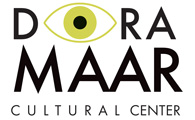Isabelle Laban-Dal Canto oversees a network of museums in rural departments of France, housing a variety of collections: prehistoric and Roman archaeology, painting, contemporary art, fossils, ethnological objects. As a specialist in modern art, she is also an independent researcher interested in the margins of art, including geographical, where artists choose to live in remote areas. In this context she met art dealer Lucien Henry. A native of the village in which he set up his business, he sold, frequented and loved a great many artists between the 1950s and his death in 1988. He was able to gather around him some well-known figures (Bernard Buffet, Henri Cartier-Bresson) but above all artists with original backgrounds, often self-taught, always committed to a singular creative path. Isabelle Laban-Dal Canto’s research into this atypical figure brings her to the heart of her subject: creation far from the norm.
Edna Bonhomme is a historian of science, a culture writer, and a book critic based in Berlin. Her work has been published in The Atlantic, Esquire, Frieze, The Guardian, The London Review of Books, and The Nation, among others. She is co-editor of After Sex, a collection of essays, poems, and short stories illuminating “why people need free and universal access to abortion – without apology.” Moreover, she’s the author of A History of the World in Six Plagues, a nonfiction book that explores the relationship between captivity and contagion. Edna holds awards and fellowships from the Max Planck Institute for History of Science, the Ludwig Maximilian Universität, the Camargo Foundation, and the Baldwin for the Arts. Most recently, Edna received the 2023 Robert Silvers Foundation Grant for Works in Progress and the Andy Warhol Foundation Arts Writing Grant. She holds a PhD in History of Science from Princeton University.
Andrea Kollnitz is Associate Professor in art history at the Institution for Culture and Aesthetics, and former senior lecturer at the Centre for Fashion studies at Stockholm University. Her current research is focused on the self-fashioning of the avant-garde artist; nationalist visual and textual fashion and art discourse, fashion photography and caricature. She is co-editor, with Marco Pecorari, of Fashion, Performance and Performativity (Bloomsbury, forthcoming), and, with Louise Wallenberg, of Fashion and Modernism (Bloomsbury, 2018).
Susan L. Aberth holds Edith C. Blum Professor in the Art History and Visual Culture distinguished chair at Bard College in Annandale-on-Hudson, New York. She is widely published in books, exhibition catalogues, auction catalogues and periodicals. Leonora Carrington: Surrealism, Alchemy and Art was the first monograph on the artist and is still in print its 8th edition. In 2020 she and Mexican curator Tere Arcq published The Tarot of Leonora Carrington. Some of her essays in exhibition catalogues include: Surrealism and Magic, Guggenheim Venice (2022); Not Without My Ghosts (2020, traveling exhibition in England); Agnes Pelton: Desert Transcendentalist (Phoenix Art Museum, Whitney Museum of American Art, 2019), Leonora Carrington: Cuentos Magicos (Museo de Arte Moderno & INBA, Mexico City, 2018). She has written essays for many books and for the Journal of Surrealism of the Americas; Artforum, ASAP/Journal; Words without Borders; Mélusine; Art Journal.
Mercedes Pérez Bergliaffa is an academic, writer and artist specialized in Visual Arts and Art History, with a vast career in media. She currently coordinates a photothèque devoted to the history of women in Argentina. She also holds a professorship in Curatorial Studies at UNA, the Universidad Nacional de las Artes, and gives the graduate seminar on the History of Photography at the same university. Mercedes also organizes the Laboratory on Art Writing. She has received a wide range of recognition and prizes, among which, a fellowship at the Banff Centre for the Arts – Fundación Antorchas (Canada), the Grant of the Government of Canada, the Quinquela Martín Prize (Argentina), a CFC grant (Argentina), a grant from the Hermit Foundation (Czech Republic), as well as awards and support from various museums and institutions, including the Guggenheim Museum and the Fondation Langlois pour l’Art, la Science et la Technologie (Canada).

.png)
.png)